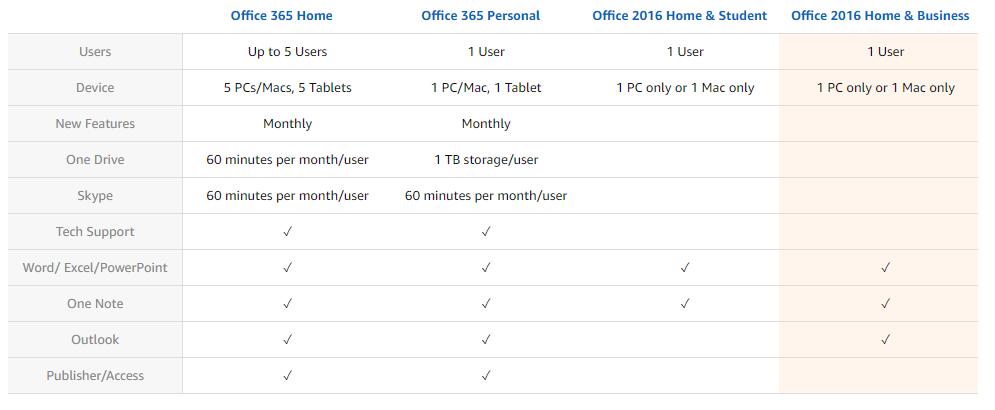
- #Office 2016 home and business mac how to#
- #Office 2016 home and business mac for mac#
- #Office 2016 home and business mac software#
- #Office 2016 home and business mac code#
- #Office 2016 home and business mac mac#
That Office experience pushes you towards saving documents in OneDrive (and OneDrive for Business and SharePoint) so you can use the new document sharing and improved shared editing features.
#Office 2016 home and business mac mac#
Still, as with ribbons and menus you get the Office experience where that’s appropriate and the standard Mac experience the rest of the time. Perhaps confusingly, the On My Mac dialog is the way you can save and open iCloud files – that’s the same as any other Mac application, so it makes sense that Microsoft hasn’t tried to duplicate it, but it makes Apple’s cloud service feel less integrated than OneDrive, which feels odd on a Mac. If you want to open or save a document on your Mac, or on a network or external drive, click the On My Mac button in the dialog to switch to a standard macOS file dialog (although there’s an Online Locations button to get back to the cloud file dialog). Documents you’ve opened from websites show up in the Recent Documents list, which includes documents from cloud services that you’ve edited on other computers but there isn’t a central place to look back at them.

You can see your own cloud files, and files that other people have shared with you, which is a big time saver. OneDrive, OneDrive for Business and SharePoint are all in the Open and Save dialogs (and just as on Windows, Add a Service doesn’t list any other cloud services, particularly not iCloud). Windows users will be envious, especially since Microsoft stripped out the OneDrive integration in the Office 2016 dialogs on Windows in a recent update. That makes collaboration far simpler – on Windows, you have to start in the OneDrive website rather than being able to open a document someone has shared directly in Word or Excel. Not only does it show you your OneDrive folders by default in the Open and Save dialogs (and the multiple columns of macOS continue to be the best way to handle lots of nested folders), but you can see files and folders that have been shared with you right in the same dialog.

#Office 2016 home and business mac for mac#
Office 2016 for Mac does the best job we’ve seen so far of integrating OneDrive – better than Office 2013 or even Windows 8.1.
#Office 2016 home and business mac how to#
Microsoft is thinking more of Mac users than visiting Windows users, but it’s also far easier to switch between the Windows, macOS and iPad versions of Office without having to hunt for how to do things. (If you’re having difficulty tracking down a command, use the search bar on the Help menu and it will pop up the menu you need with the command highlighted a handy option from Office Online.) Again, OneNote has nearly all of the ribbon features in the menus, but there are menu options – for example, related to managing notebooks – that you can’t do from the ribbon. This gives menu fans the option of minimising the ribbon and ignoring it, but there are a few things ribbon users will have to go look for in the menu. Similarly, the commands from the View tab are split between the View and Window menus. The Protect Document command is on both the Tools menu and the Review tab – but the Restrict Permission tool from the Review tab is on the File menu instead. You get both a Table menu and a set of Table commands on the Insert tab of the ribbon in Word 2016, and the Tools menu and Review tab have almost the same set of commands – but not quite. That’s not just the file management tools on the File menu where you’d expect them (there’s a File menu in Office 2013 too, which has the options for each program, whereas Office 2016 keeps Preferences on the Apple menu where Mac users will look for them). If anything, Office 2016 is almost too much of a Mac application, because instead of putting everything on the ribbon the way Office does on Windows, it both splits and duplicates features between the ribbon and the menus.

Plus, you can save your documents in the cloud with OneDrive and access them from anywhere.

Office Home and Business 2021 is made to help you achieve more with time-saving features, a modern look, built-in collaboration tools, and the power of Outlook for email, calendars, and contacts. Microsoft Office Home and Business 2021 CD Key for MAC
#Office 2016 home and business mac code#
After your payment, you will get an email with your unique activation code.Įnter the code we send you on to activate and download your software. HOW TO ACTIVATE OFFICE HOME & BUSINESS 2021 FOR MAC:įirst, simply check-out using any of our easy payment methods. This product is multi-language and completely region free.
#Office 2016 home and business mac software#
This is an unused, brand new CD Key for Office Home & Business 2021, which can be used to activate the software legitimately on a Mac. This is a brand new genuine cd key for Microsoft Office Home and Business 2021.


 0 kommentar(er)
0 kommentar(er)
